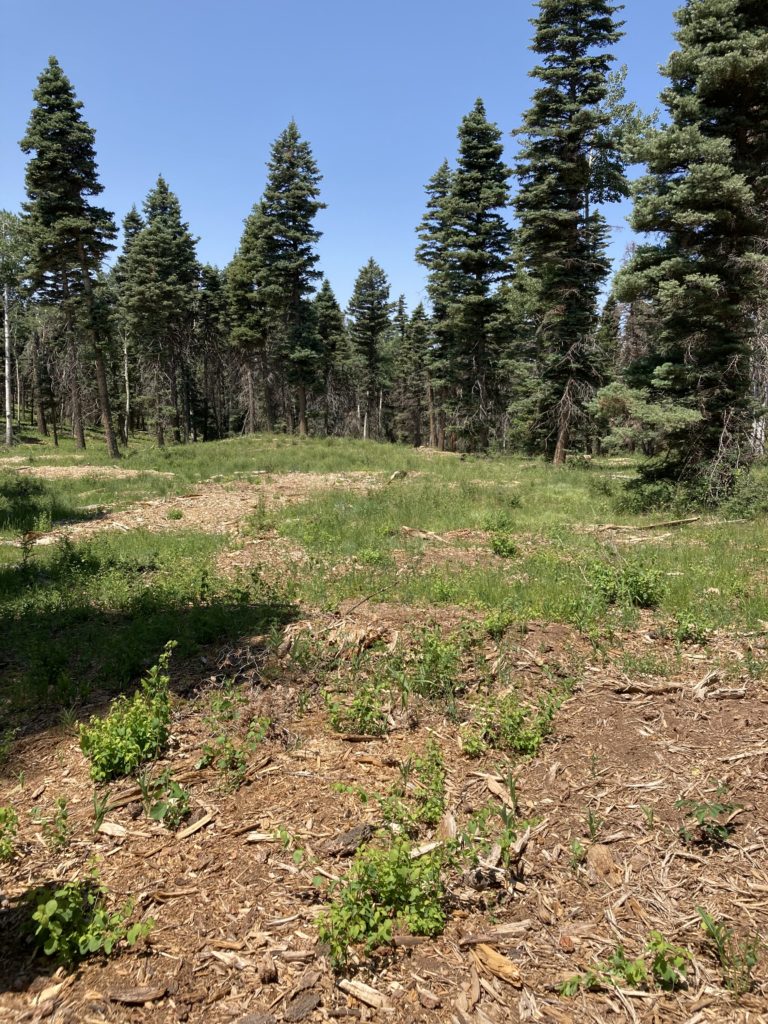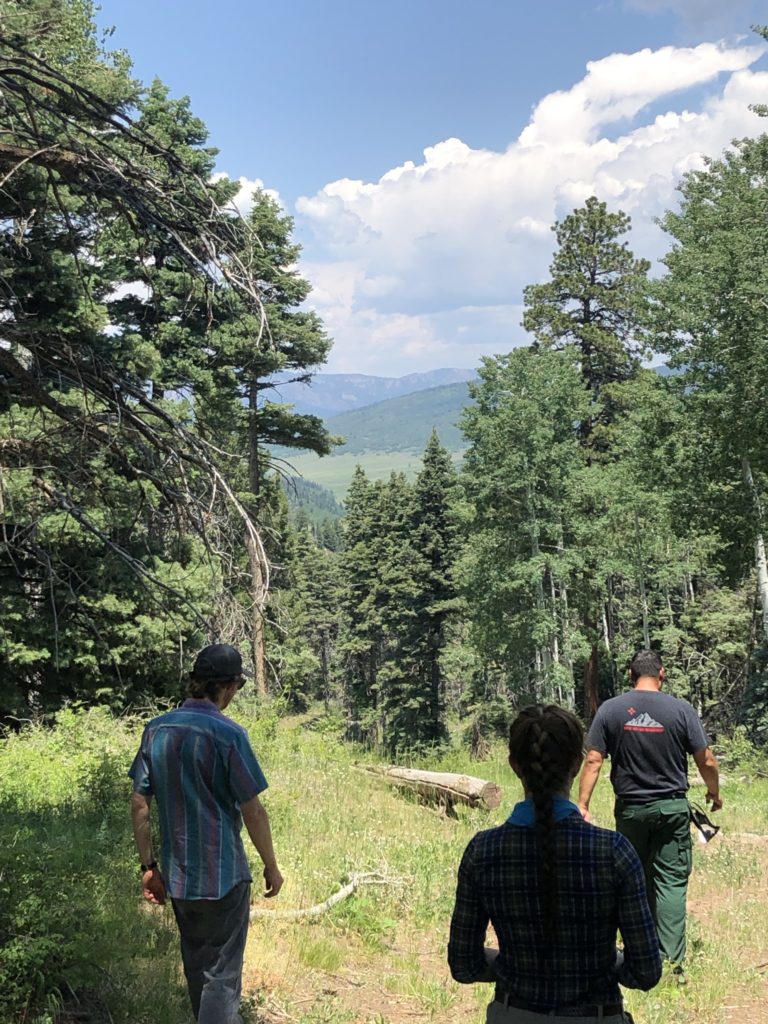Forest Health Initiative Program
 Written by Rachel Bean
Written by Rachel Bean
On a warm summer day last June, I found myself walking through the intermittent shade of a recently thinned, high-elevation spruce-fir forest. I was on Quinlan Ranch, a working property tucked up against the Carson National Forest in northern New Mexico. Just a stone’s throw from the Colorado border, we were there to see the effects of two different forest health treatments, both intended to reduce tree mortality exacerbated by the presence of spruce budworm and fir engraver, and both supported by the financial assistance of the Forest Health Initiative (FHI) program.
Insects and diseases don’t stop at fence lines or property markers as they spread across the landscape, so it is important that forest resilience treatments don’t either. Still, cooperation, collaboration, and shared management objectives across land ownership boundaries can be challenging ideals to achieve, even though a common vision of landscape stewardship is critical to most conservation efforts. This is especially true in the fire-adapted and drought-susceptible high desert of New Mexico, where a mix of state, federal, and private parcels or ranches such as Quinlan checkerboard the landscape. The monetary cost of forest health treatments can also be a barrier to implementing a cohesive land management strategy. To bridge this ideological and fiscal gap, New Mexico State Forestry (EMNRD-FD) administers FHI, a national cost-share program aimed at improving tree and forest health across boundaries through on-the-ground treatments.
 Most participants in the program are private landowners, while municipalities, land grants, other subdivisions of the state, and tribes can also apply for reimbursement of up to 70% of the cost of thinning and slash treatment on their property. Funded by the USDA Forest Service’s Western Bark Beetle Initiative, the program’s approved treatments aim to prevent future forest losses to bark beetle infestations and other insects, pathogens, and diseases. The program requires development of a long-term forest health management plan to ensure treatments are ecologically-sound and results are sustained beyond the span of the 1-year FHI cost-share agreement. The guidelines of the program and allowable treatments also ensure that these management plans are aligned with management goals on adjacent public lands.
Most participants in the program are private landowners, while municipalities, land grants, other subdivisions of the state, and tribes can also apply for reimbursement of up to 70% of the cost of thinning and slash treatment on their property. Funded by the USDA Forest Service’s Western Bark Beetle Initiative, the program’s approved treatments aim to prevent future forest losses to bark beetle infestations and other insects, pathogens, and diseases. The program requires development of a long-term forest health management plan to ensure treatments are ecologically-sound and results are sustained beyond the span of the 1-year FHI cost-share agreement. The guidelines of the program and allowable treatments also ensure that these management plans are aligned with management goals on adjacent public lands.
As a fiscal agent and collegial partner, the Forest Stewards Guild supports NM State Forestry in their administration of the FHI program. The Guild assists with review of program applications, checks inspections of project work for completion, and reimburses program participants once the terms of their application have been fulfilled. We also support site visits to completed projects, such as on Quinlan Ranch, to share lessons learned, engage in adaptive management, and strengthen partnerships. The Guild’s involvement in the program brings an additional layer of accountability to the financial and environmental outcomes of specific projects. We also serve to amplify this message of opportunity for landowners and to encourage cross-boundary collaboration. One piece of the puzzle is cooperative land management, and the FHI program educates landowners and empowers them to be responsible stewards of our shared future.
Interested in learning more about the program and its history? Visit the Forest Stewards Guild’s FHI webpage or the NM EMNRD Forest Health page.
